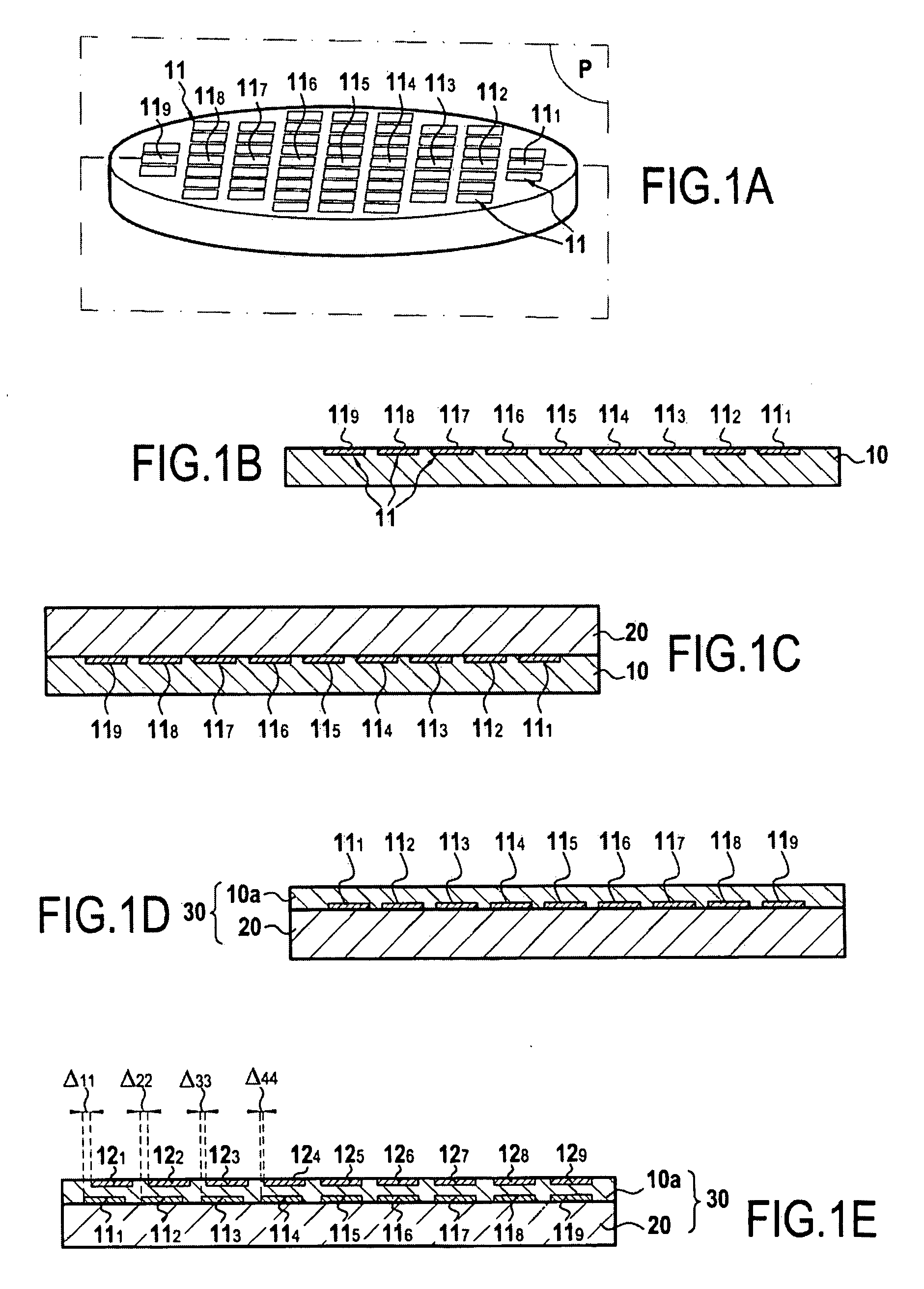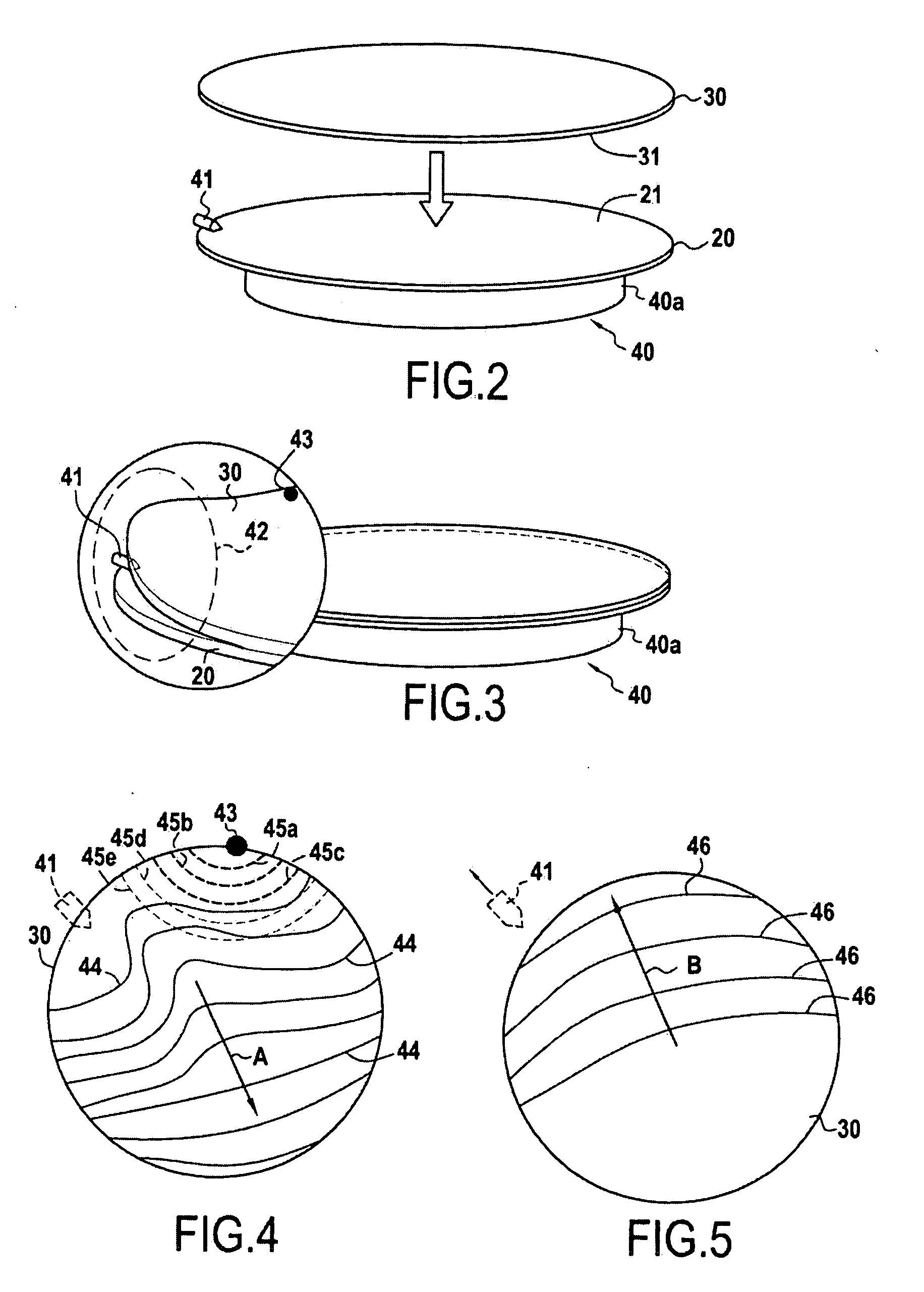Process for assembling wafers by means of molecular adhesion
a technology of molecular adhesion and wafers, which is applied in the direction of semiconductor devices, solid-state devices, radio frequency controlled devices, etc., can solve the problems of reducing the quality and value affecting the quality of multi-layer semiconductor wafers, and difficult, if not impossible, to form additional microcomponents. achieve the effect of high-quality multi-layer
- Summary
- Abstract
- Description
- Claims
- Application Information
AI Technical Summary
Benefits of technology
Problems solved by technology
Method used
Image
Examples
Embodiment Construction
[0029]Reference will now be made in detail to the present preferred embodiments of the invention. The method and corresponding steps of the invention will be described in conjunction with the detailed description of the system and product obtained.
[0030]This invention applies generally to the production of composite structures including at least a bonding by molecular adhesion of a first substrate or wafer onto a second plate substrate or wafer. Bonding by molecular adhesion is a well-known technique. The principle of bonding by molecular adhesion is based on the direct contact of two surfaces, (i.e. without the use of a specific material (glue, wax, solder, etc.)). Bonding operations require that the surfaces are sufficiently smooth, free of particles and contamination, and that the surfaces are sufficiently close to one another to allow contact to be initiated, typically at a distance of less than a few nanometers. When brought into such proximity, the forces of attraction between...
PUM
| Property | Measurement | Unit |
|---|---|---|
| Pressure | aaaaa | aaaaa |
| Adhesion strength | aaaaa | aaaaa |
| Area | aaaaa | aaaaa |
Abstract
Description
Claims
Application Information
 Login to View More
Login to View More - R&D
- Intellectual Property
- Life Sciences
- Materials
- Tech Scout
- Unparalleled Data Quality
- Higher Quality Content
- 60% Fewer Hallucinations
Browse by: Latest US Patents, China's latest patents, Technical Efficacy Thesaurus, Application Domain, Technology Topic, Popular Technical Reports.
© 2025 PatSnap. All rights reserved.Legal|Privacy policy|Modern Slavery Act Transparency Statement|Sitemap|About US| Contact US: help@patsnap.com



